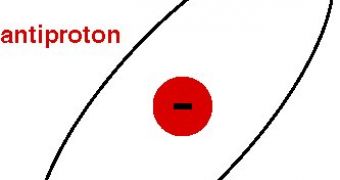There is a place on Earth, deep underground, where whole atoms of antimatter are being built. This is no top secret government installation, it's just the largest physical experiment in the world. CERN's Large Hadron Collider, built below ground level, spanning in at the border of two countries, Switzerland and France, is the place where two teams of scientists are engaged in a race to trap the first atoms of antihydrogen.
Just one of the six major experimental edifices placed around the 17-mile (27-kilometer) ring on the French-Swiss border, is huge on its own. The project is called the ALPHA antimatter collaboration and it's a joint operation working on the Antiproton Decelerator facility on the CERN campus.
The experiment aims to trap atoms of antihydrogen in a magnetic cage, but actually obtaining the results seen in science-fiction for decades has so far proved to be extremely difficult.
Antimatter is composed of antiparticles in the same way that normal matter is composed of particles. For example an antielectron (positron) and an antiproton could form an antihydrogen atom in the same way that an electron and a proton form a normal matter hydrogen atom.
It's been hard to produce antimatter because it is not found naturally on Earth and antihydrogen is the most stable form that has been obtained in labs, but only in minuscule amounts, not in enough quantity to do more than test a few of its theoretical properties.
Due to the fact that production is difficult (only a few atoms are produced in reactions in particle accelerators) and that there is higher demand for the other uses of particle accelerators, antimatter is currently the most valuable substance in existence, with an estimated worth of $300 billion per milligram.
So it's by far not enough to use as a fuel for the propulsion of starships, like those in seen in Star Trek, where the energy of matter-antimatter annihilation is harnessed to create a warp bubble, or in weapons applications like the photon torpedoes.
Scientists will be happy to be able to trap just a few atoms of antihydrogen in a magnetic trap, allowing them to further study the unique properties of this exotic matter.

 14 DAY TRIAL //
14 DAY TRIAL //